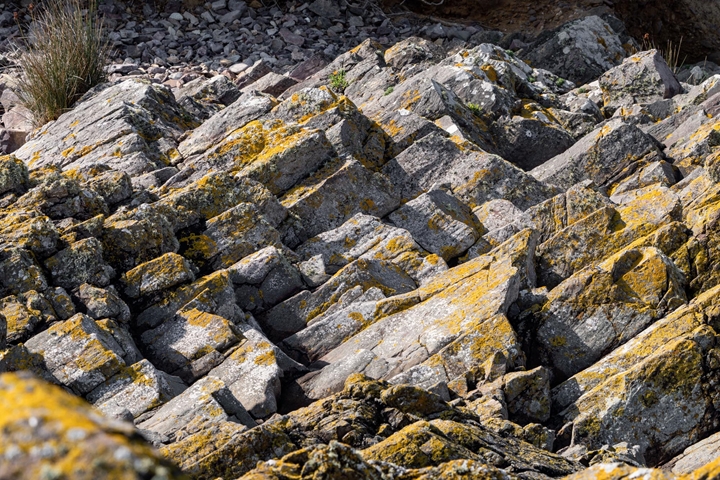Minerals of Jersey
Minerals are made from elements like silicon, oxygen, aluminium, iron and other metals. Every rock holds a secret. Quartz like sea-spray, jasper as red as sunset, copper greens that whisper of fire. They are the fundamental building blocks of all rocks. As magma (molten rock) cools, minerals such as quartz and feldspar form crystals. The longer the cooling process takes, the larger the crystals. Minerals can also be carried through rocks by water, forming crystals as the water evaporates. Different minerals bring out different colours in the rock.

7 minerals hidden within Jersey’s shoreline
Every rock holds a secret. Quartz like sea-spray, jasper as red as sunset, copper greens that whisper of fire. They are the fundamental building blocks of all rocks. As magma (molten rock) cools, minerals such as quartz and feldspar form crystals. The longer the cooling process takes, the larger the crystals. Minerals can also be carried through rocks by water, forming crystals as the water evaporates. Different minerals bring out different colours in the rock.
Quartz
Shimmering like sea-spray in the sun, quartz crystals hide in Jersey’s rocks – some as long as your finger. Nature’s jewellery, scattered along the shore. At La Rocque quartz crystals can be the size of a candle – it’s Jersey’s commonest mineral and is what eventually wears down into sand grains.
Feldspar
Pink, red, or pearly white… feldspar paints the Island’s granite cliffs with warmth. Every fleck tells a story of ancient fire and slow cooling deep underground.
Amphiboles
With names like hornblende and actinolite, these dark, needle-like crystals feel almost enchanted – threads of mystery woven through our rocky landscape. Hornblende is Jersey’s commonest amphibole. It is black and really obvious in some of our igneous rocks. Actinolite is green, fibrous and rare but has been found on Jersey – it is related to asbestos.
Augite & Olivine
Born from molten rock, these minerals once glowed with the Earth’s fire. Today, they lie quiet in gabbros and basalts, a reminder of Jersey’s volcanic heart. Augite is common and dark-coloured; olivine is green. Both are best seen in Jersey’s igneous dykes which includes gabbro ones.
Shiny Ores
Iron reds, copper greens, golden flecks of pyrite – treasure hunters once chased these veins. Today, they’re clues in Jersey’s story of industry and earth. Pyrite is common in several rock types including at Le Pulec where it is associated with the veins which were subject to a short-lived attempt to mine lead and silver in Victorian times.
The Subtle Ones
Epidote is apparently bright yellow-green and is seen as radiating crystals in veins of pegmatite within Jersey’s granites. Zircon is abundant but only as tiny crystals which you’d need a microscope to see – it is extremely hard and is widely used for dating ancient rocks. Tiny crystals like epidote or zircon may not catch your eye at first, but look closer – they sparkle like hidden stars within the stone.
The Colourful Surprises
Red jasper, green malachite, glowing garnets… Jersey’s rocks sometimes burst with colour, like secret messages from beneath the waves. Jasper is a red variety of a copper ore called chalcedony which is apparently common and sometimes occurs as beach pebbles. Malachite – it’s a bright green copper ore which occurs at a few places in Jersey. Garnets are bright red and I know these are found at Les Minquiers, sometimes as quite large crystals (2 cm). It occurs in other rocks too.
Have you spotted Jersey’s hidden treasures?